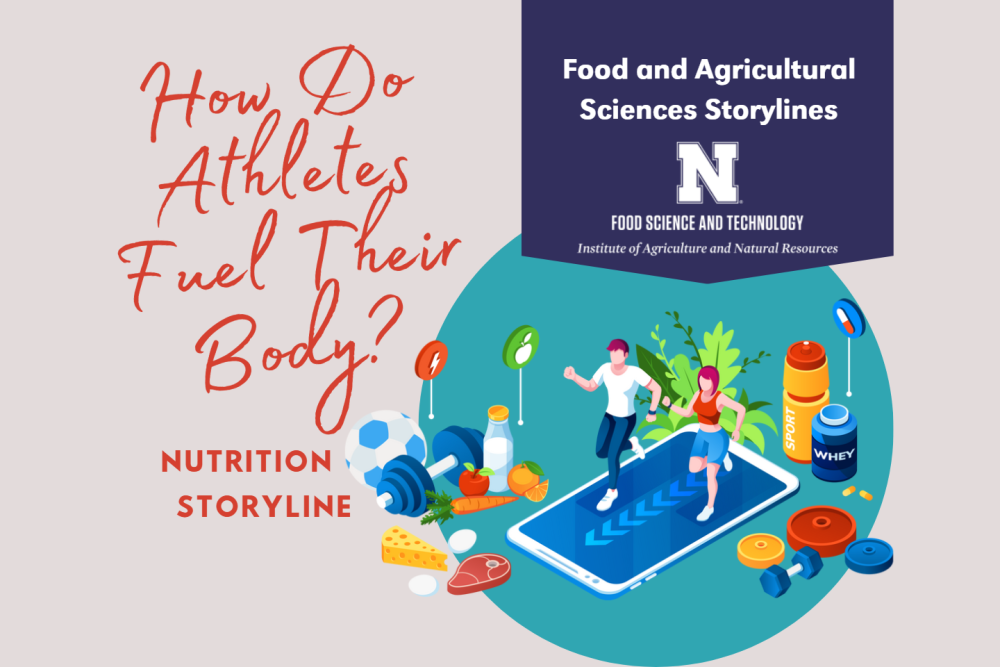
How do Athletes Fuel Their Body? - Nutrition Storyline is a standards-aligned science unit that helps students understand how food (inputs) going into the athlete’s body affect their performance (output).
Overview
Have you ever wondered why athletes have different diets? As part of this Storyline, students will examine why athletes have different nutritional requirements based on their level of physical activity. Students will investigate how food influences energy intake and how the calories and macronutrients athletes consume affect their bodies. The final assessment requires students to formulate a high protein product that will meet needs for high performance athletes. In addition, they will explore the careers involved in the development, acceptance, and marketing of food products, as well as the nutritional aspects required to meet different dietary needs.
Lesson 1
-
Students will be introduced to the phenomenon of why athletes eat different diets and how food intake and quality can affect their athletic performance. As students discuss personal experiences with food and exercise, they will create a driving question board (DQB) to begin to understand the inputs and outputs that may affect athletes’ performance.
-
Students will learn how to better understand nutritional labels and the information they provide. Their goal will be to compare the nutritional value and caloric content of different breakfasts from various athletes depending on their level of activity. Moreover, they will gain an understanding of what dietitians do as part of their careers.
-
To keep the athletes’ bodies functioning their bodies utilize energy found in foods in the form of calories and macronutrients for physical activity. Students will determine the number of calories in a product using calorimetry to learn where energy comes from. Furthermore, they will evaluate the sensory properties of food such as, flavor, color, and texture, and how these relate to product formulation.
-
Food provides energy for the body, which allows athletes to perform physical activity. Carbohydrates in food are the main source of fuel and their energy comes from the chemical bonds between the carbons in glucose molecules. In this lesson, students will balance the aerobic respiration equation to understand how energy is released and stored in the body.
-
In aerobic respiration, glucose reacts with oxygen to form carbon dioxide and water; while the energy released in harvested in the form of ATP - the body's energy currency. In this lesson, students will revisit aerobic respiration and learn how ATP contributes to the movement of fibers and the contraction of muscles.
-
Foods can also provide protein, which is an essential nutrient that plays a critical role in our bodies. Athletes should be concerned about protein quality and obtaining essential amino acids through foods. Students will learn about essential amino acids, protein denaturation and how protein is digested and absorbed in the body.
-
Students will learn about daily protein requirements to maintain health and understand why athletes require more protein in their diets than average individuals. Furthermore, they will recognize protein ingestion and exercise as the main drivers to muscle synthesis.
-
The product development process requires the collaboration of many experts to create a successful product. The final project will require students to combine their knowledge of food science and nutrition to create a high protein product for athletes.
Curriculum Connections
Next Generation Science Standards
- HS-LS1-2: Develop and use a model to illustrate the hierarchical organization of interacting systems that provide specific functions within multicellular organisms.
- HS-LS1-7: Use a model to illustrate that cellular respiration is a chemical process whereby the bonds of food molecules and oxygen molecules are broken and the bonds in new compounds are formed, resulting in a net transfer of energy.
- HS-PS1-4: Develop a model to illustrate that the release or absorption of energy from a chemical reaction system depends upon the changes in total bond energy.